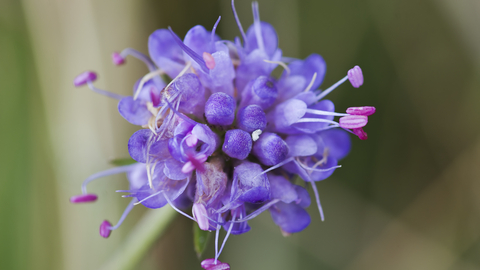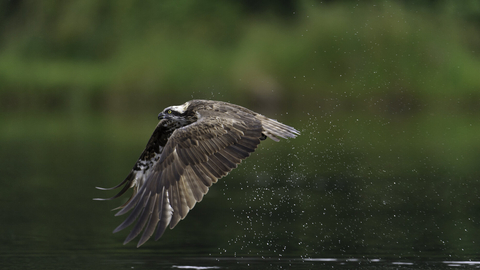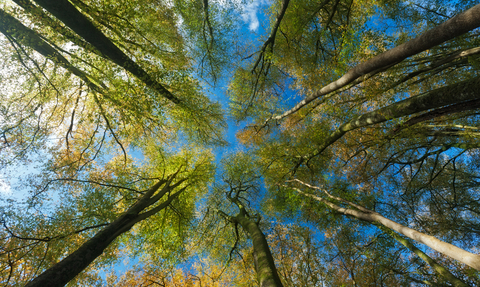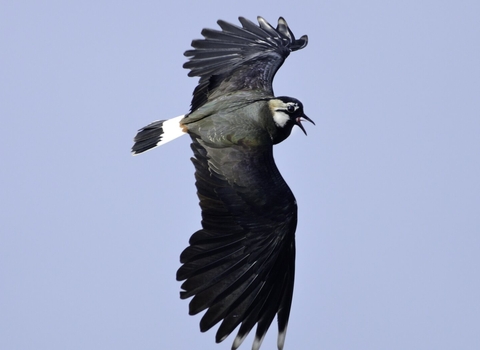Mallards (in a blizzard) - credit Beth Thomas


WildNet - Andrew Mason
Semer Water Nature Reserve
Please keep to the public footpaths on this reserve. It is hazardous to explore away from such. We do not control the parking at Low Blean Farm and the owner is apt to close it without notice.
Location
Know before you go
Dogs
Please respect the overwintering and breeding birds by keeping your dog on a short lead at all times.
When to visit
Opening times
Open at all times. We recommend a half day trip for this picturesque reserve. For a longer outing why not make it part of a day out in the Dales? Nearby Hawes, Bainbridge and Askrigg are also worth a visit if you have the time.Best time to visit
March to JuneAbout the reserve
The reserve is a mix of habitats, including fen, marsh, species-rich meadows, willow carr and developing mixed woodland. Wading birds feed on the lake’s sandy shore, which supports needle spike-rush and sedge species.
Much of the site is an old lake bed, which still floods regularly, attracting overwintering birds including wigeon, teal and snipe. You might also hear the musical echo of ice breaking up. Birds to spot (bring binoculars!) in spring and summer include curlew, oystercatcher, lapwing, redshank and sand martin. Keep an eye on the sky for a visiting osprey; Yorkshire’s first breeding pair in centuries nested in Wensleydale recently.
Contact us
About
Semer Water is the second largest natural waterbody in North Yorkshire; a glacial lake which was formed at the end of the last Ice Age when huge amounts of glacial till blocked the outflow.
Crooks Beck takes the water from three feeder dales upstream through the nature reserve. There is a full range of habitats from open water with swamp species like yellow water lily, through to fen, marsh and willow carr to developing ash woodland on the driest part. The sandy shore supports a fine growth of needle spike-rush and an abundance of sedge species dominate and it is here that the waders feed. The willow species are challenging with many hybrids but bay willow dominates.
The Trust's reserve is in three blocks at Semer. The first is located at the south-western end of the lake. The remaining two land parcels known as Marsett Meadows are located up stream. All three sites are wet species rich meadows.
A belt of mixed ash wood has been planted on the eastern boundary as part of a project to slow rainwater run off into the lake. Much of the site is an old lake bed which still floods regularly and Yorkshire Wildlife Trust also control a wedge of the lake to a central buoy. The level of the lake was lowered by 3ft in 1937 and the old shore line is still visible.
The Trusts reserve located at the south western end of Semer Water is comprised of a range of habitats including fen, marsh, hay meadow, willow carr with developing ash woodland in the drier areas.
When the lake floods back into the reserve during the winter it provides important foraging habitat for a range of wading birds. If you visit as any ice breaks up, its music echoes around the dale!
In the summer the rushes on site provide suitable nesting habitat for birds. The two parcels of land known as Marsett Meadows provide cover for snipe through the winter and are rich in flowers through the summer.
In spring the site is of high value for a range of bird species including tufted duck, great crested grebe, lapwing, curlew and redshank. In summer, the grasslands are species rich including devils bit scabious and species such as sand martin, willow warbler and reed bunting can be seen and heard on site. In autumn migrant bird species start to arrive on the site. In winter birds that are often seen include wigeon, teal, mallard and snipe.
Once the ground-nesting birds have fledged the nature reserve is grazed with cattle and sheep and excess rush is cut in late summer when possible.
Seasonal highlights
- Spring: Birds - Tufted duck; Great crested grebe; Lapwing; Curlew; Redshank
- Summer: Plants - Devil's-bit scabious; Birds - Sand Martin; Willow Warbler; Reed Bunting; Sedge Warbler; Mammals - Brown Hare
- Autumn: Mammals - Roe Deer, Stoat, Brown Hare
- Winter: Birds - Wigeon; Teal; Mallard, Whooper Swans
Directions
Public transport
Bus service to Bainbridge then walk up the River Bain footpath to the lake and on to the site.
By car
Take the A684 Leyburn-Hawes road and exit at Bainbridge. Follow signs for Semer Water. Park at Low Bean Farm for a small charge and take the footpath opposite the farm across the fields to the nature reserve. There is also limited free parking in Stalling Busk.

Guy Edwardes/2020VISION

